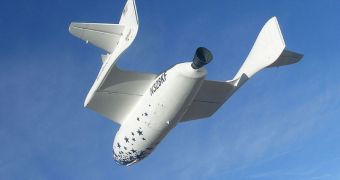Come July, the stage will be set for the largest space competition ever to begin in the United States. With the space shuttles retired, companies offering private spaceflight will take center stage, and with them so will the scientific community.
Researchers around the world are itching to get the chance to conduct scientific observations in a region of the atmosphere that is way too high for balloons, but very low for spacecraft in orbit.
As such, this community is shaping up to be one of the main beneficiaries of the emerging industry, right next to billionaires, eccentrics and space fanatics. Scientists will queue up, their experiments in hand, at the same line as those who afforded to pay Virgin Galactic $200,000 in advanced for a ticket.
Virgin, XCOR Aerospace, Blue Origins, Boeing anf Bigelow Aerospace are just some of the names we will be hearing a lot about in the coming years, and also the most likely to succeed in the upcoming space race.
Experts, such as those at the Southwest Research Institute (SwRI), in Boulder, Colorado, have already gone ahead and started developing experiments for upcoming, suborbital spaceflights.
“We're a bit ahead of the curve. We've gone out – not even waited for taxpayer dollars. We're almost ready to fly. The vehicles aren't quite ready, but the experiments are pretty much built and ready to fly,” SwRI planetary scientist Alan Stern says.
The enthusiasm displayed by the research group – which has already signed on with Virgin Galactic for six flights to the edge of space – is rather widespread among the scientific community in general.
“The impact is going to be huge. It's almost like it's the late 1970s and you're imagining how modern computing will change the world,” argues Stern, quoted by Space.
“The [International Space Station] is amazing, and it has tremendous capability, but it will always be limited to just the few people there, and it takes years to prepare things to go up,” he goes on to say.
“We have this very experimental, creative system that suborbital will foster, and we need them both. It's not that suborbital is better, it's different. Baseball could not survive without the minor leagues – it takes the minors to make the majors really shine,” Stern adds.
The most anticipated capability that scientists will get is that of frequent access to space. Even if Virgin Galactic charges about $200,000 per set per flight, that price tag is bound to drop as other spacecraft become available, and new companies enter the race.
In addition, this money is nothing compared to the $35 million that Russia used to ask space tourists for a seat on the Soyuz capsule and a 7-day stay on the ISS.

 14 DAY TRIAL //
14 DAY TRIAL //